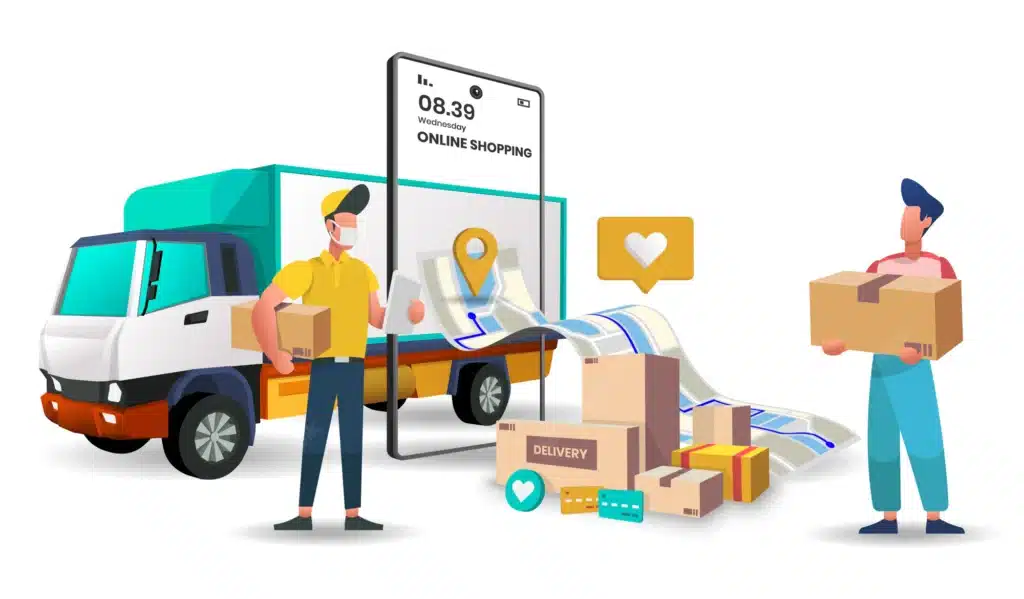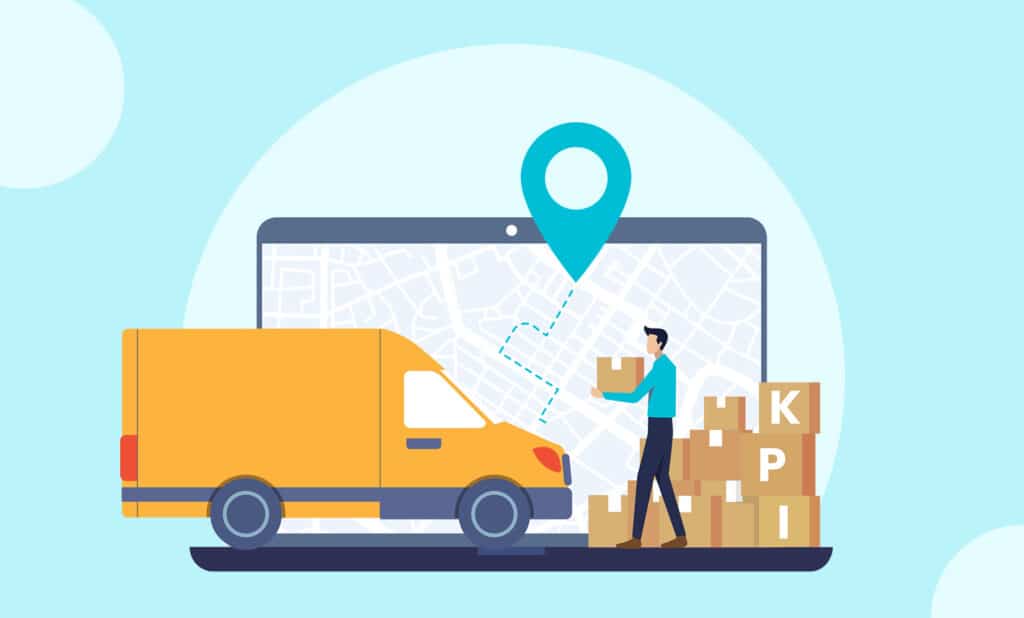In the ever-evolving world of logistics, the importance of last-mile delivery has become increasingly prominent.
This final leg of the delivery process plays a crucial role in customer satisfaction, operational efficiency, and overall business success.
Businesses rely on key performance indicators (KPIs) to measure and optimize their performance to effectively manage last-mile delivery.
But what exactly are KPIs in last-mile delivery, and why are they so vital? In this blog post, we’ll dive into the concept of KPIs and explore five crucial metrics that can help businesses enhance their last-mile delivery processes.
Table of Contents
What is KPI in Last-Mile Delivery?
KPI stands for Key Performance Indicator, which is a measurable value that helps businesses assess the success of a specific activity or process.
In the context of last-mile delivery, KPIs are used to track and evaluate the efficiency, effectiveness, and overall performance of the final stage of the delivery process — the journey from a local distribution center or delivery hub to the customer’s doorstep.
Since last-mile delivery directly impacts customer satisfaction, timely deliveries, and operational costs, it is critical for businesses to monitor these KPIs.
By doing so, they can identify areas for improvement, optimize routes, manage costs, and ensure a seamless delivery experience.
Common KPIs in last-mile delivery include on-time delivery rate, cost per delivery, customer satisfaction scores, and delivery accuracy.
These metrics help businesses gain insights into their delivery performance, and allow them to adjust their strategies to better meet customer expectations and operational goals.

For more insights, explore Is Air Freight Cheaper than Sea Freight? Complete Comparison in 2025
Benefits of Using KPIs in Last-Mile Delivery
Incorporating KPIs into your last-mile delivery strategy isn’t just about tracking performance — it’s about delivering a better experience for customers. Here are the benefits of using KPIs in last-mile delivery:
- Improved Efficiency: KPIs help identify bottlenecks and inefficiencies in the last-mile delivery process. By monitoring metrics like delivery time and route optimization, businesses can streamline operations and increase overall delivery speed.
- Enhanced Customer Satisfaction: Customer experience is directly tied to the success of last-mile delivery. Tracking KPIs like on-time delivery rate and customer feedback allows businesses to address issues promptly, ensuring customers receive their orders on time and in perfect condition, leading to higher satisfaction and loyalty.
- Cost Control: Last-mile delivery is often the most expensive part of the logistics process. KPIs such as cost per delivery or fuel consumption provide insights into areas where costs can be reduced, enabling businesses to optimize routes.
- Better Decision-Making: KPIs provide data-driven insights that help businesses make informed decisions. Whether it’s adjusting delivery schedules, modifying routes, or exploring new technology, according to Dubai’s Roads and Transport Authority (RTA) KPIs give decision-makers the information they need to implement effective solutions and strategies.
- Increased Accountability and Transparency: By setting clear performance benchmarks, KPIs create accountability across teams and stakeholders involved in the last-mile delivery process. This transparency ensures everyone is aligned and working toward common goals, improving collaboration and performance.
Keep reading on What is the Meaning of Stocktaking? The 4 Differences Between Stocktaking and Stock Checking
5 Crucial KPIs for Last Mile Delivery
Tracking KPIs can help businesses to identify areas for improvement, reduce costs, and enhance the overall customer experience.
On-Time Delivery Rate (OTD)
The On-Time Delivery Rate measures the percentage of deliveries made within the promised time frame.
It’s one of the most critical KPIs because timely deliveries are directly linked to customer satisfaction.
High on-time delivery rates indicate that your logistics operations are running smoothly, while delays can lead to frustration and lost business.
Cost per Delivery
This KPI tracks the cost associated with delivering each package to the customer. It includes transportation costs, labor, fuel, packaging, and other operational expenses.
Keeping this cost under control is essential for profitability. By analyzing cost per delivery, businesses can identify areas where they can optimize processes, reduce waste, and improve efficiency.
Customer Satisfaction and Feedback
Tracking customer satisfaction through surveys, ratings, and feedback is crucial in the last-mile delivery process.
This KPI assesses the quality of the delivery experience from the customer’s perspective, covering aspects like delivery time, condition of the package, and overall service.
A high level of customer satisfaction is an indicator of a well-run delivery operation according to Dubai Trade, and it helps build customer loyalty.
First-Time Delivery Success Rate
The First-Time Delivery Success Rate measures the percentage of deliveries that are successfully completed on the first attempt.
A high first-time success rate means that customers receive their packages without delays or the need for redelivery, saving costs and improving efficiency.
It’s essential for improving customer satisfaction and reducing unnecessary operational costs.
Delivery Accuracy and Order Fulfillment
This KPI focuses on the accuracy of deliveries, ensuring that the right package is delivered to the correct address.
High delivery accuracy reduces returns, customer complaints, and additional operational efforts to resolve issues.
Accurate order fulfillment is vital for maintaining trust and meeting customer expectations.

Discover more on Global Sourcing Advantages and Disadvantages
The Future of Last-Mile Delivery KPIs
The future of last-mile delivery KPIs will be shaped by emerging technologies and evolving consumer expectations. Here are some key trends:
- AI and Data Analytics: AI will optimize delivery routes, predict delivery times, and provide deeper insights into operations, improving efficiency.
- Sustainability Metrics: Environmental KPIs, such as carbon emissions per delivery and eco-friendly transport options, will grow in importance as businesses focus on reducing their environmental impact.
- Real-Time Tracking: Enhanced visibility through real-time tracking and status updates will become crucial for improving customer satisfaction and trust.
- Personalized Delivery: KPIs will evolve to track customer preferences, such as preferred delivery times and locations, to offer more tailored experiences.
- Automation and Drones: New KPIs will track the performance of drones and autonomous vehicles, ensuring safe and efficient automated deliveries.
- Dynamic Pricing: Cost-efficient KPIs will adapt to factors like weather and traffic, helping businesses maintain profitability while meeting fast delivery demands.
Continue reading The Positive and Negative Impacts of the Amazon Effect on Freight in Dubai
Concluding our thoughts on KPIs in the Last-Mile Delivery
KPIs are essential tools for measuring the effectiveness of last-mile delivery operations. By tracking the right metrics, businesses can gain valuable insights, improve efficiency, reduce costs, and ultimately deliver a better customer experience.
Whether you’re a logistics provider or an e-commerce retailer, understanding and utilizing KPIs is key to staying competitive in the fast-paced world of last-mile delivery.
As the industry continues to evolve, these metrics will remain at the heart of performance optimization, ensuring that businesses can meet and exceed customer expectations while improving their operational workflows.
Ready to optimize your last-mile delivery and enhance customer satisfaction? Contact Z Line Logistics experts today to discover how our tailored solutions and advanced KPIs can streamline your operations and drive success.




